The Netherlands, Denmark and Germany – three European countries with concentrated competence in the field of electrically assisted cargo bikes. The Allgemeine Deutsche Automobil-Club e. V. (ADAC) considers this to be very similar. For its test of single-track e-cargo bikes, it visited a total of six manufacturers from precisely these countries and subjected their Longjohns to a detailed check. Muli Cycles took the victory with the “Muli Motor st” to Germany.
Children taking the centre stage
A usually smaller wheel at the front, a larger one at the back and the space between the front wheel and the head tube serves as a cargo area. With this basic characteristic, Longjohns have conquered their place on our roads and have enjoyed growing popularity for years. The ADAC has taken a closer look at six models from the now more than abundant range of such cargo bikes:
- Babboe “City-E”
- Bullitt “eBullitt 6100”
- Muli Cycles “Muli Motor st˝
- Prophete “Cargo Plus E-Bike”
- Triobike “Cargo”
- Urban Arrow “Family”
All the bikes listed can basically be used for quite different purposes. In its now published test, the ADAC focused primarily on transporting children. Aspects that are particularly relevant for transporting loads were given less attention. You should keep this in mind when evaluating the models.
Which features are relevant?
With a focus on transporting children, the ADAC paid particular attention to the following features:
- How can the bike be ridden, both unloaded and with passengers on board?
- What does the built-in ebike system do?
- Which gear system is it combined with?
- How does the bike perform in everyday life, for example when getting on and off the box, when stowing smaller utensils or when parked?
- How safe is riding the bike for the riders and passengers?
- What materials does the manufacturer use for the several components?
The matrix is perhaps not the last word on the subject. Nevertheless, it gives a good impression of how complex such a seemingly simple question as “What makes a good e-cargo bike?” actually is. For example, there were cutbacks for the Babboe since you can hit the children’s heads with the handlebars during larger steering angles if they are tall enough and wear a helmet. The Prophete rain cover also does not sufficiently take into account the possible height of the passengers. Children’s helmets protrude well above the actual height of the cabin.
- If the steering angle is large, the handlebars on the Babboe City-E collide with the passengers’ helmets.
- Test winner Muli Cycles solves this problem on the Muli Motor st with a height-adjustable handlebar.
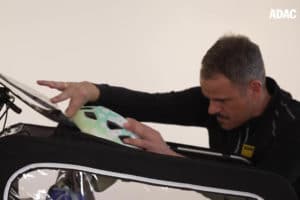
The canopy of the passenger cabin of the Prophete Cargo Plus E-Bike cannot be closed if the children have reached a certain height and are also wearing a bicycle helmet.
Partially essential lacks
The Bullit model failed the test due to the fact that the ADAC found prohibited pollutants in the belts of the child seats. It was possible that children chewed on the ends of the belts during the ride and thus absorbed harmful plasticisers. Consequently, the ADAC awarded the grade ” inadequate” in the category “pollutants”, which inevitably resulted in the identical verdict in the overall grade. Without this category, the bike would have come in second in the test.
The ADAC was not really enthusiastic about the range of the cargo bikes. The 40 to 60 kilometres determined were rather short if you wanted to manage a complete week in everyday life without recharging the batteries. This assessment applies to the entire field of participants.
When looking at the charging time, the “City-E” from Babboe in particular stood out negatively. It took more than seven hours for the battery to reach its full capacity again after starting from zero. However, the information provided by the ADAC does not specify which battery this refers to. Variants with 450 watt hours and 500 watt hours are available. The other bikes clearly undercut Babboe’s target with values between three and five hours.
- As here on the Triobike Cargo, it is sometimes quite difficult for children to get out of the cabins, which have been fitted with weather canopies.
- One point of criticism from those who tested the Urban Arrow Family was the unstable bipod stand of the e-cargo bike.
The test winner was the smallest bike of all bikes
In the end, the “Muli Motor st” from Muli Cycles emerged as the winner of the test with an overall score of 2.1. The “Family” from Urban Arrow also received a “good” with a score of 2.4. The score of 2.6 meant a “satisfactory” for the “Cargo Plus ebike” from Prophete as well as for the “Cargo” from Triobike. In addition to the points of criticism already mentioned for the “City-E” from Babboe, there was also behaviour in tight corners that could be improved, where the pedal on the inside of the curve can drag very quickly on the ground in the lower position and the front wheel can suddenly tilt unexpectedly towards the inside of the curve. The bottom line is an overall score of 3.1, which is still enough for a “satisfactory” rating.
- When there are neither children nor loads to transport, …
- …. you can conveniently fold up the cargo box on the Muli Motor st.
On the Muli Cycles model, the ADAC praises the handling. This is most comparable to that of a conventional bicycle due to the relatively low wheelbase and overall length of the bike. However, the cargo box is correspondingly smaller and less capable of carrying loads. You can pack a maximum of 70 kilograms of weight into it. With the Urban Arrow “Family” it is 55 kilograms more. In terms of your individual requirements, your ranking could therefore look quite different from that of the ADAC. Especially since the Urban Arrow offers space for three children in the cabin, while the Muli Motor st definitely has only space for two children. And they sit noticeably closer together.
With its small turning circle, the foldable cargo box and its zero pollutants, however, the bike, which is made in Germany, scored the plus points that ultimately set it apart from the competition.
Pictures: ADAC e.V.; ADAC/Test und Technik; Ebike24
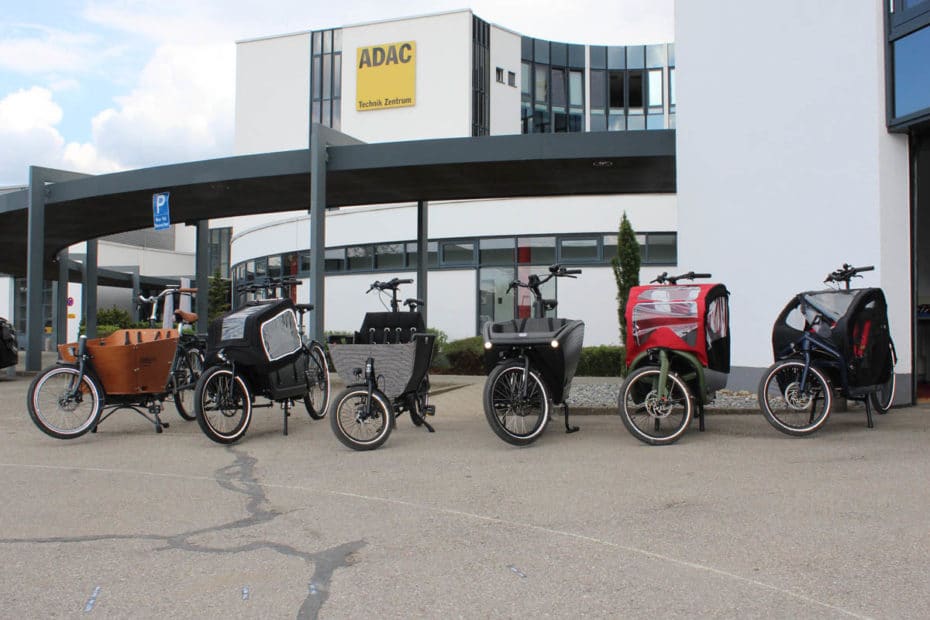
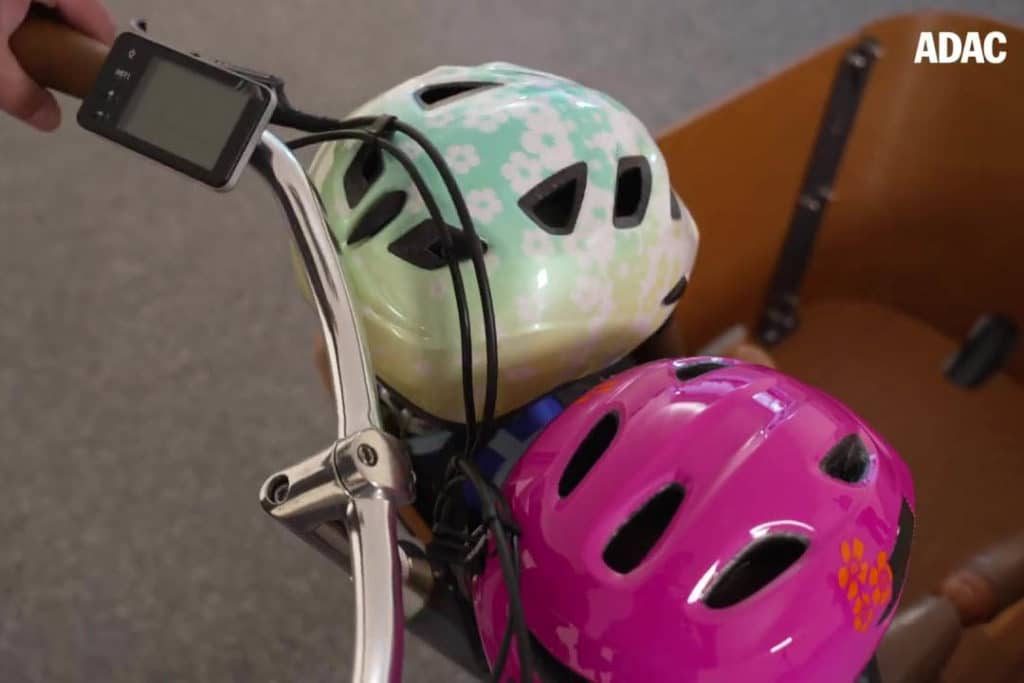
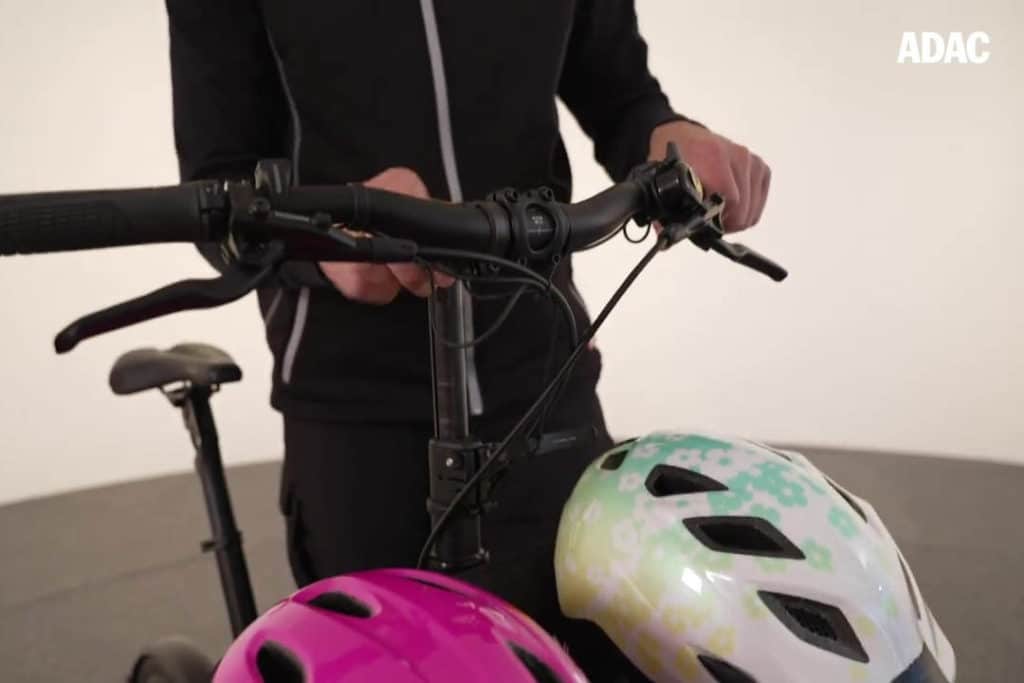
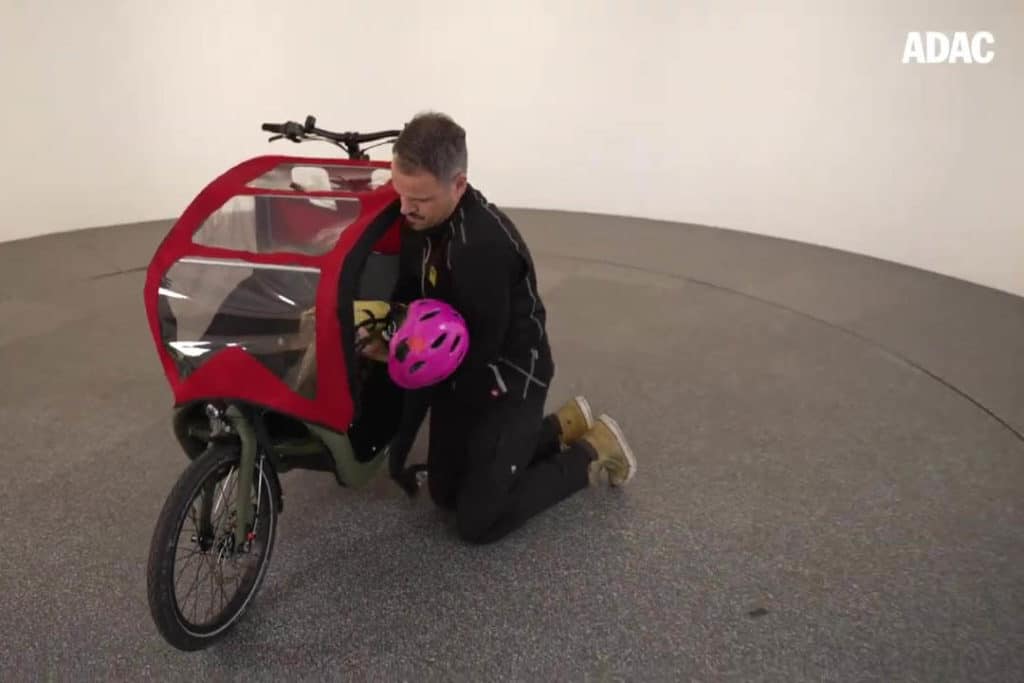
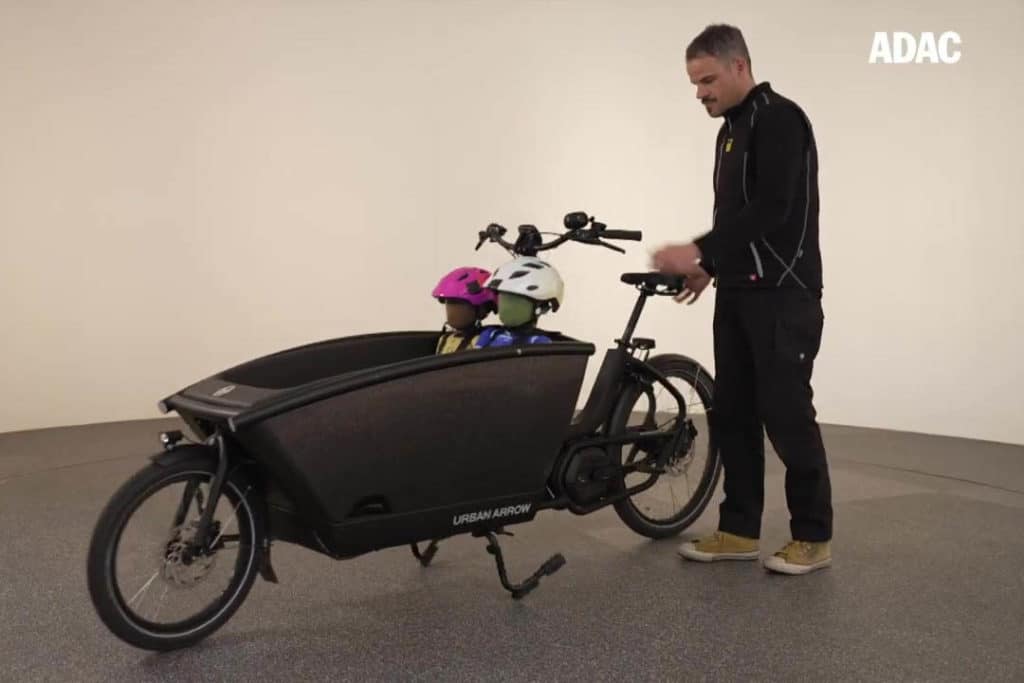
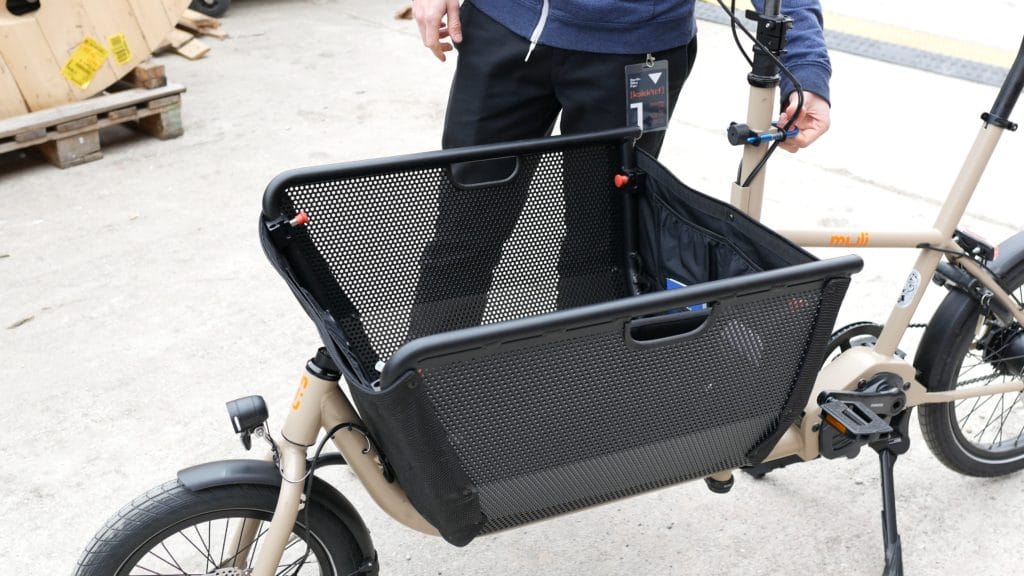
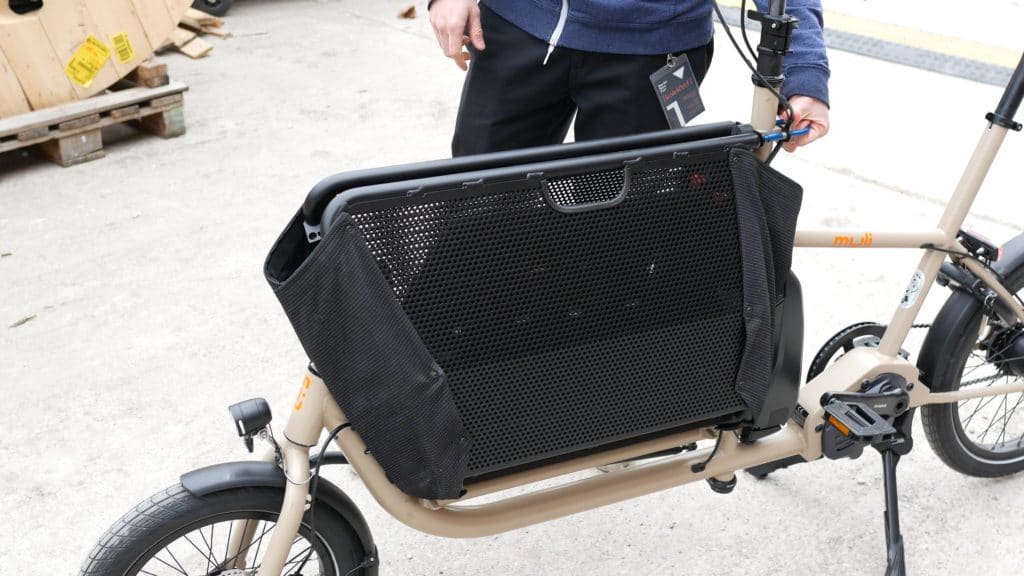
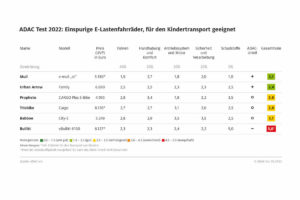


zijn er testen die de butchers en bycicles en de Dekra Sblocs vergelijken ?
Hello Lambert,
At least, we dont’t know a test featuring Butchers&Bicycles as well as Sblocs. But have riden both bikes. Maybe our videos can be of some help.
Butchers&Bicycles
https://www.youtube.com/watch?v=fC1F8JsXYpc
Sblocs
https://www.youtube.com/watch?v=HNxGo-Y4dTo
Cheers, Matthias